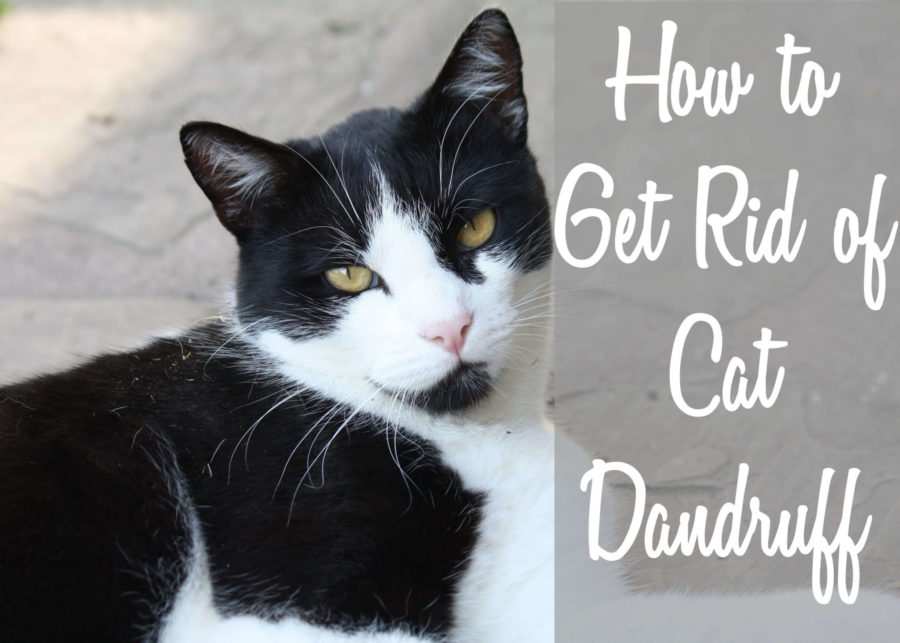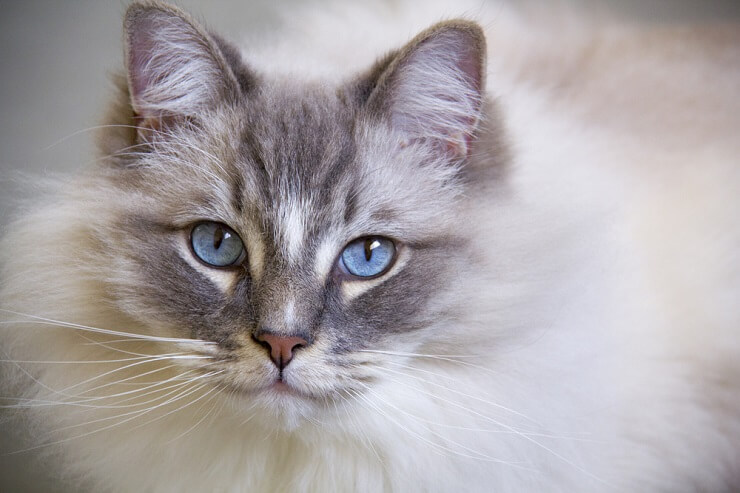How To Get Rid Of Cat Dandruff?
This page contains affiliate links. We may earn money or products from the companies mentioned in this post through our independently chosen links, which earn us a commission. Learn More
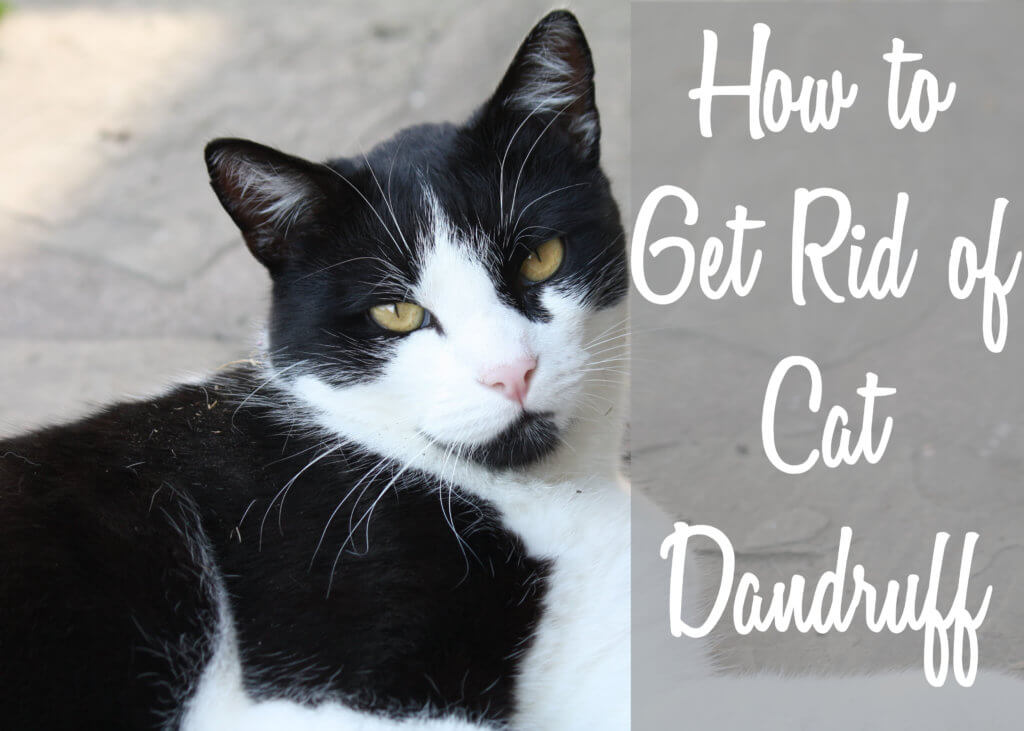
Cat dandruff is a common skin condition identified by dry, itchy and flaky skin. Dandruff is a symptom that can be caused by external or internal factors.
In most cases it is harmless, but if you notice excessive amounts of dandruff combined with other symptoms, it maybe a good idea to see your veterinarian. In order to get rid of cat dandruff, you must first determine what maybe causing it.
Symptoms
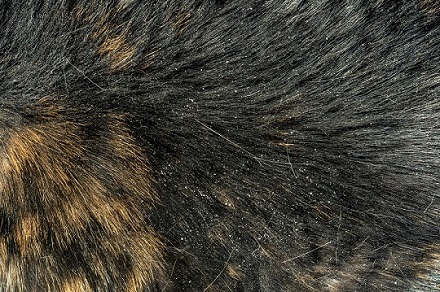
Dandruff symptoms include scaly, dry-looking skin on your cats fur. If your cat has thick fur, parting it may help to see the flakes near the actual skin.
You may also see flakes on your cats brush after a grooming session or on carpets, furniture, clothing, and other places your cat may lounge. You may notice your cat grooming more frequently, oily fur or an increase in shedding. Dandruff usually appears around the ears and head of cats, but also affects the back, stomach and legs.
Causes
Cat dandruff may be caused by a combination of medical and environmental factors. Cats with especially thin coats that spend time out doors may be subject to sunburn which can cause dandruff.
Medical causes for dandruff may include allergies, diabetes, hormonal deficiencies as well as nutrition disorders. Bites from fleas, mites or lice can cause allergic dermatitis which in turn causes flaky skin.
Cheyletiella mites are one type and referred to as “walking dandruff” because they can be seen with the naked eye. These skin parasites can be treated easily, but it is necessary to treat all other pets residing in the same home to eradicate it completely. Poor nutrition and diet or lack of grooming may also lead to dandruff in cats.
Treatment
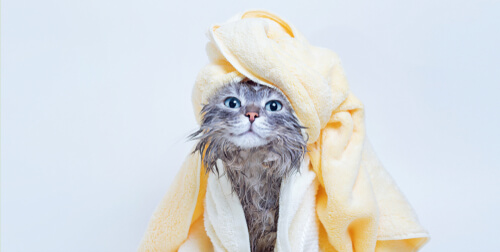
Change Shampoo – Certain shampoos maybe drying your cats skin. Look for a hypoallergenic formula as well as a conditioner that will moisturize your cat’s skin. Always rinse well so that left over shampoo does not cause more dandruff.
Use Moisturizer – Try a skin moisturizer formulated for cats, especially during winter months and this may stop the skin from flaking. Consider one with oatmeal like Catfresh to soothe irritated skin.
Change Diet – Diet plays a significant role in how healthy your cat’s skin and coat is. Look for a cat food for healthy skin and coat to ensure your cat is getting the nutrients needed.
Always check the labels on cat food to verify it is made with quality food ingredients. Wet food is recommended for cats with dry skin. You can alternate kibble and wet food. Monitor the amount of water your cat is drinking and make sure that the water is always fresh.
Treat Parasites – If mites or other parasites are the culprit of cat dandruff, it is important that the cat is treated specifically for them. Anti-parasitic medications are needed for effective treatment of parasites. This means that medicated shampoos will not take care of this problem.
Prevention
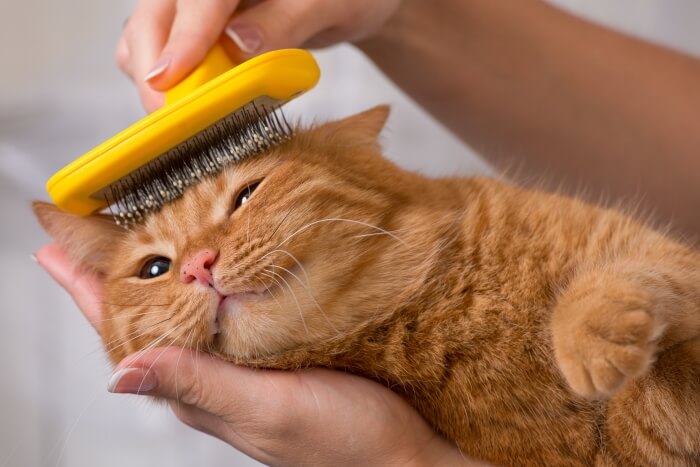
Brush Your Cat – Brushing your cat may reduce the dead skin cells and loose hairs from your cat’s body. Even if your cat grooms itself, the dandruff can still occur. If your cat is too obese or old to groom thoroughly, help her by brushing her coat daily. Always check for parasites like fleas or mites while brushing.
Prevent Parasites – Make sure your cat is protected against dander causing parasites like fleas, mites or ticks. Use an over the counter treatment on her skin. Apply the treatment after bathing your cat and always follow the instructions on the label.
Bathe Your Cat – Bathing may help reduce the amount of dandruff, if your cat allows it. Cats typically do not like water, so you may need to take it slow or consider a water-less shampoo like Vet’s Best.
Add Supplements – Supplements like Omega 3 & 6 can help to reduce the amount of dander your cat produces and reduce her chances of developing dander. Fish oil supplements can provide enough essential fatty acids for your cat, which can reduce inflammatory conditions or issues she may be having. Inflammatory issues can also be a cause in production of dander. You can find fish oil supplements for cats in capsule or liquid form, https://neurofitnessfoundation.org/ambien-zolpidem/.
Get a Humidifier – If your cat spends most her time indoors, this may cause dry skin and excessive flaking due to heaters running. Consider getting an air humidifier to add moisture to the air or keep one near your cats bed.
Keep Your Home Clean – Tackle dander by washing all drapes, curtains, and slip covers in your washing machine once a week. A HEPA vacuum has a high efficiency particulate arresting filter that will pick up and remove dander from carpets and other fabric surfaces. You can also use lint brushes and rollers that are specifically made to remove dander on your furniture.
Conclusion
Cat dandruff may not always be a serious issue, but that doesn’t mean it should ever be ignored. If your attempts to treat your cat’s dander with home treatments do not work, the veterinarian is your next stop. He can examine your cat’s skin and conduct several tests and determine the best treatment for your cat.

